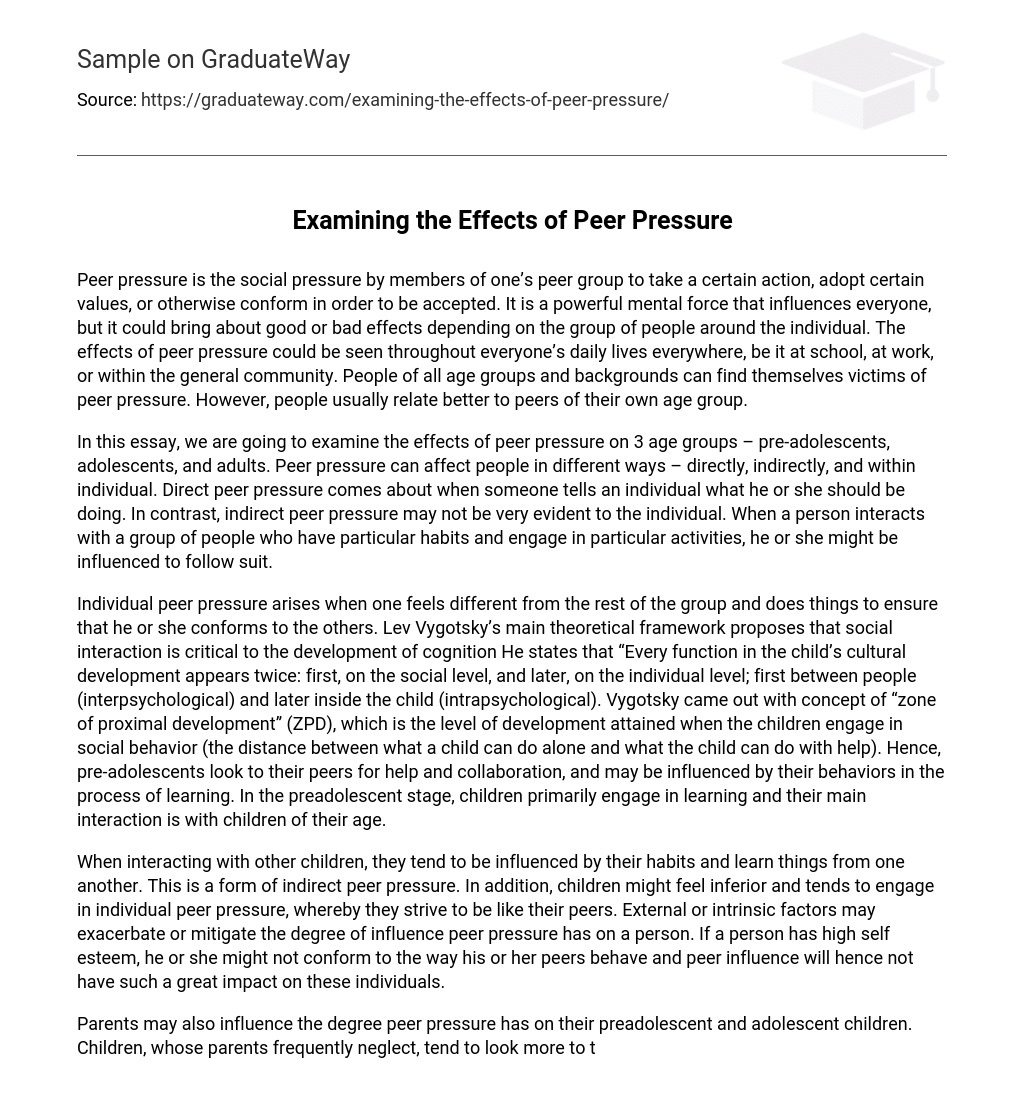Peer pressure refers to the social pressure exerted by peers in order to conform and be accepted. Its influence can have either positive or negative consequences, depending on the particular group. The impact of peer pressure is far-reaching and can be seen in different contexts such as school, work, and the community. Although people from diverse backgrounds and age groups may experience its effects, individuals generally find it easier to connect with peers who are of a similar age.
This essay seeks to examine the impact of peer pressure on three distinct age groups: pre-adolescents, adolescents, and adults. Peer pressure can have different consequences on individuals, such as direct influence where one person instructs another on what to do. On the other hand, indirect peer pressure may not be immediately apparent to the individual. When individuals are exposed to a group that adopts particular habits and participates in specific activities, they may feel compelled to mimic similar behaviors.
Vygotsky’s main theoretical framework emphasizes the importance of social interaction in cognitive development. He asserts that a child’s cultural development occurs on both individual and social levels. The concept of the “zone of proximal development” (ZPD) was introduced by Vygotsky, which indicates the level of development achieved through participating in social activities. The ZPD measures the difference between what a child can do independently and what they can accomplish with assistance. Consequently, pre-adolescents often rely on their peers for support and collaboration, being influenced by their behaviors while learning. During the preadolescent stage, children primarily learn by interacting with same-aged peers.
When children interact with each other, they often engage in indirect peer pressure, influencing and learning from one another. Moreover, children may feel inferior and attempt to mimic their peers, resulting in individual peer pressure. The level of influence exerted by peer pressure is determined by external and internal factors. If an individual possesses a strong self-esteem, they may choose not to conform to their peers’ actions, thus diminishing the effect of peer influence on them.
Parents have a significant influence on how peer pressure affects their preadolescent and adolescent children. If children are neglected, they may turn to their peers for guidance and imitate their behaviors, making them more susceptible to peer influence. However, if parents establish strong control and dedicate quality time to bonding with their kids, the likelihood of falling victim to peer pressure decreases.





